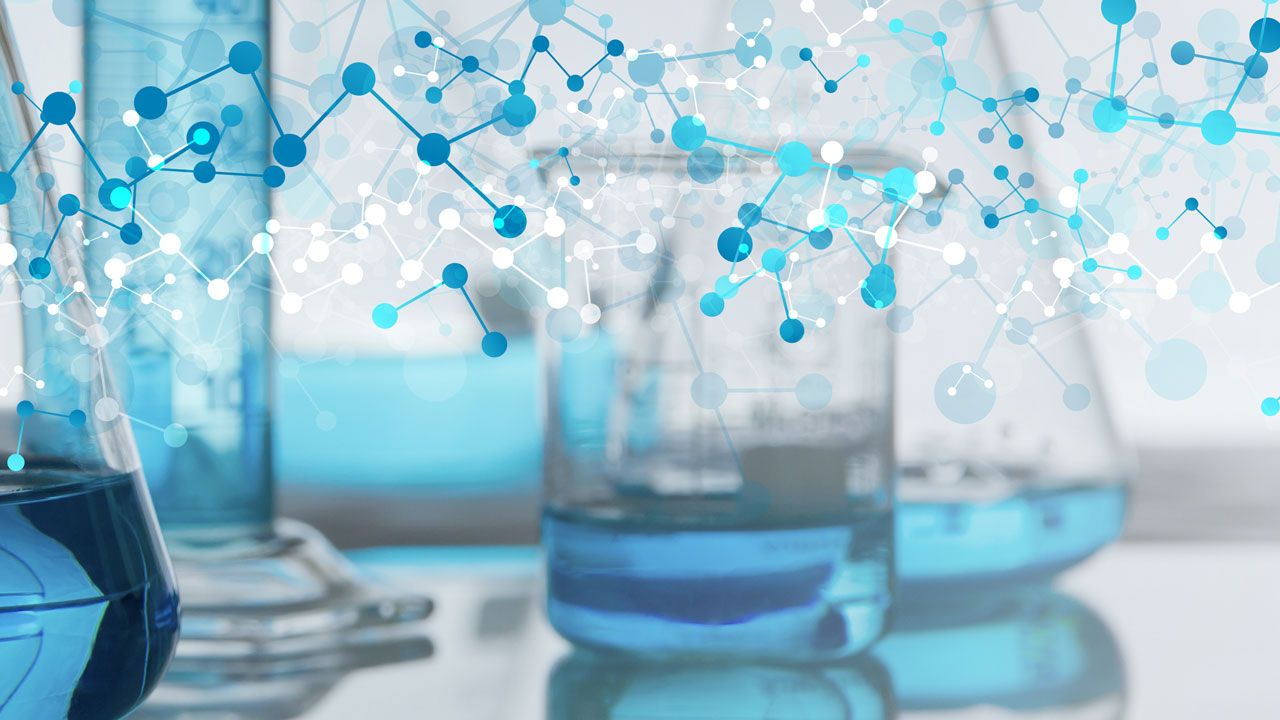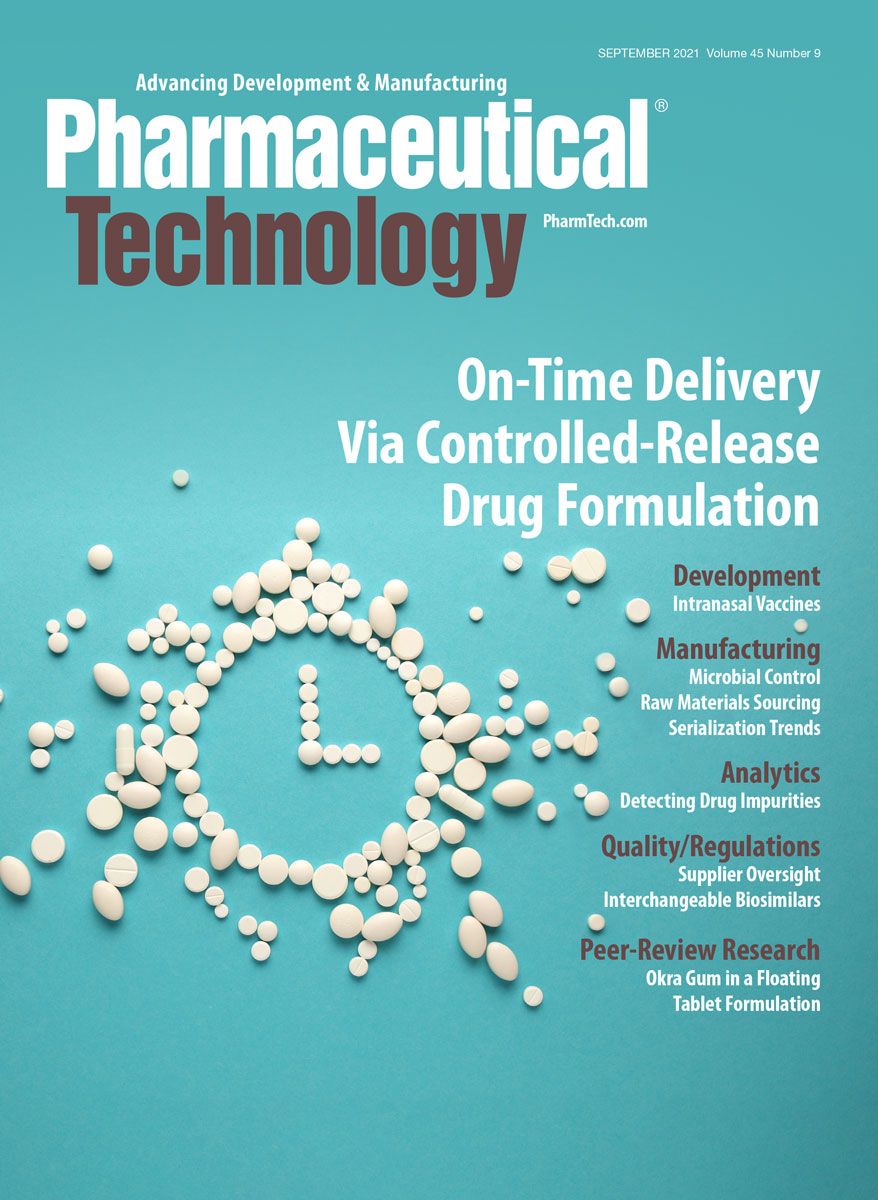Stepping Up the Search for Unknown Impurities
Intelligent analytical tools detect impurities to help ensure the quality of small-molecule drug ingredients.
xyz+ - stock.adobe.com

The United States Pharmacopeia (USP) defines an impurity as “any component of a drug substance that is not the chemical entity defined as the drug substance and in addition, for a drug product, any component that is not a formulation ingredient” (1).
Most impurities are small molecules that originate from the manufacturing process or packaging materials, which contaminate the end product of pharmaceutical agents. The presence of impurities could affect the quality and safety of drug products, even in trace amounts, posing health risks to patients due to their potentially carcinogenic or immunogenic effects. Indeed, N-Nitrosodimethylamine impurities in the drug valsartan were found to increase the risk of hepatic cancer in some patients with long-term prescriptions (2). Moreover, even impure compounds with less dangerous effects can pose problems by changing the efficacy or usability of treatments.
Impurity profiling is mandatory in the manufacturing process of pharmaceutical products. Undesired compounds must be detected, identified, and quantified at several stages to ensure efficacy and safety. To protect patient safety and ensure the integrity of the production line, it is common for manufacturers to identify and eliminate types of impurities in drug ingredients before they get into the manufacturing process and the downstream product. Typically, the earlier impurities are detected and removed, the less time and resources are wasted on using a contaminated ingredient.
It is challenging, if not impossible, to completely remove all impurities in the manufacturing process; however, manufacturers should ensure impurities are absent, or present in safe levels, and don’t affect the function of the final product. It is, therefore, imperative to have reliable, accurate, and efficient methods of detecting impurities.
Impurity profiling is a complex procedure owing to the large number and diversity of impurity compounds that can find their way into drugs during manufacturing. Advances in mass spectrometry methods offer solutions for comprehensive impurity detection.
Impurities in pharmaceuticals
Regulatory agencies, such as the European Medicines Agency (EMA), set guidance on the content and qualification of impurities in pharmaceutical agents (3). Three major classes of impurities must be profiled in drug products and drug ingredients: organic impurities, inorganic impurities, and residual solvents.
Organic impurities can include starting materials, by-products, intermediates, degradation products, reagents, ligands, and catalysts. One example can be found in the manufacturing of paracetamol, also known as acetaminophen, which is synthesized with p-aminophenol as a starting material or intermediate. Drug regulatory agencies set strict limit tests for leftover p-aminophenol in the final bulk paracetamol product to assure purity and quality of the preparation (4). Organic impurities may also arise from the breakdown of final products including oxidative degradation, decarboxylation, and hydrolysis.
Inorganic impurities can derive from all points of the manufacturing process and include reagents, catalysts, residual metal traces, and inorganic salts. For example, the presence of inorganic salts may alter drug solubility, or the presence of rapidly oxidized materials can change the color of the drug, which could deter many patients from taking it.
Residual solvents include materials used in the production process, such as growth-selection agents, viral inactivation agents, and surfactants. These residual solvents can be present in the final dosage form. Trace amounts of compounds from shipping containers may also contaminate drug product. These residual solvents can be toxic or environmentally hazardous.
To conform with regulations, it is often necessary to isolate and characterize impurities of drug agents—both known and potentially unknown—and monitor them accurately. In such applications, thresholds for quantification of impurities often depends on the drug class and historical evidence that certain drugs are more likely to contain impurities. In these situations, manufacturers must prove a lower quantification threshold for compliance.
Analyzing unknown small molecules
The large number and variety of potential impurities presents a significant analytical challenge for their detection, quantification, and characterization. It requires the ability to distinguish trace amounts of unrelated chemicals in the background from uncharacterized and unwanted small molecules. One pertinent challenge is that some potential impurities will be unknown beforehand, meaning manufacturers often find themselves searching for them in the dark without a torch. Therefore, there is a need to measure a range of potentially unknown impurities, from very polar to non-polar molecules, in quick and efficient workflows.
Of course, manufacturers need to identify the presence of small molecules with high confidence and quantify them with high accuracy and sensitivity. As a wide range of potential unknown compounds may be present only at very low quantities, a variety of robust analytical techniques with high sensitivity and specificity are necessary to ensure the identification of as many as possible.
Current methods to characterize impurities in drug ingredients involve a set of orthogonal methods to cross check results and offer the most accurate measurement. Historically, chromatography coupled to ultraviolet detection has been the gold standard for profiling small-molecule impurities, but these methods only measure known lists of compounds verified by reference standards and cannot give detailed information on unknowns.
More comprehensive methods, such as mass spectrometry (MS) techniques, can be used to characterize small molecules within samples. MS systems can measure the mass-to-charge of compounds in a sample, which can be used to calculate the molecular weight and chemical formula of detected compounds in a sample and compare these against databases of known contaminants. These methods allow highly accurate and sensitive measurements with high discrimination power, as well as providing options to scan for unknown compounds.
However, older technologies, like single-quadrupole MS systems, often face sensitivity and specificity challenges due to unit resolution detection. Intense, co-eluting isobaric chemical background noise can hide a measured signal from the targeted compound, meaning many analytical laboratories struggle with data reduction and false positives with low resolution systems.
Identifying unknown impurities
The next generation of MS instruments are designed to unravel complex chemical structures. These instruments are designed to detect, identify, and quantify impurities in drug samples when used in combination with other technologies such as chromatography, allowing scientists to decipher complex structures. Advances in gas chromatography-MS (GC-MS) and high-resolution MS (HRMS) technologies provide user-friendly, all-in-one analysis systems, with ultra-high resolution, high sensitivity, and rapid acquisition rates to obtain the data needed for impurity analysis of drug ingredients.
Some MS-based workflows can evaluate both qualitative and quantitative aspects of impurities at high resolution. Systems providing up to 1 million resolution improve confidence for unknown small-molecule analysis and fine isotope detection for the determination of impurity molecule composition (see Figure 1). Rapid scan speeds allow for clear peak detection against a background of chemical noise, reducing the potential of false positives.
Figure 1. 1 million (1M) resolution option enables for fine isotope structure allowing confident assignment of the elemental composition of a small-molecule analyte. Targeted precursors of interest were detected using an ultra-high-resolution selected ion monitoring (SIM) scan, where the 500 K resolution SIM spectrum (top) does not show resolved fine structure for M+2, whereas 1M resolution SIM spectrum (bottom) shows resolved fine isotope structure for M+2. The selected composition along with MS2 fragment analysis allowed proposed structure elucidation for this unknown extractable. Figure courtesy of the authors.

Analytical software packages use intelligent methods to discover compounds with unique fragmentation patterns, allowing automatic peak detection, spectral deconvolution, and putative impurity identification based on library match scores. Such systems enable the identification of unknown metabolites, degradants, and transformation products that could be potentially found inside drug ingredients.
Data-dependent MS3 and higher-order fragmentation methods allow in-depth characterization of precursors to aid unknown small-molecule structure elucidation. Traditionally, small molecules are subjected to collision induced dissociation and higher-energy collisional dissociation fragmentation for structure elucidation. In addition, orthogonal fragmentation techniques like ultraviolet photodissociation (UVPD) enable the differentiation of structurally similar compounds that would otherwise appear to be identical. Here, UVPD can perform complementary fragmentation to provide more accurate annotations of analyte structures, enabling unambiguous characterization of potential impurities.
Next-gen methods and technologies advance impurity analysis
Impurities can leak into drug products during all stages of the manufacturing process. Due to their propensity to alter the efficacy and safety of drugs, it is crucial for manufacturers to identify and quantify impurities during production and in the final product. Profiling drug ingredients allows manufacturers to pinpoint when and how impurities entered the drug and reduces the risk of impurities being passed to the final drug product.
Currently, scientists must employ a range of techniques to identify, quantify, and characterize as many impurities as possible. However, comprehensively analyzing drugs for known and unknown impurities can be challenging for analytical laboratories due to the complexity of samples.
The latest generation of mass spectrometers go beyond the capabilities of previous generations for small-molecule analysis, addressing the need for accurate, efficient, and high-powered impurity detection in drug production. Using the latest technologies, more unknown compounds in pharmaceutical ingredients can be identified, protecting society from the risks of impurities entering drug products.
References
1. USP, USP General Chapter <1086>, “Impurities in Drug Substances and Drug Products” USP 40 and PF 41(3) (Rockville, MD, May–June 2015).
2. W. Gomm, et. al., Dtsch Arztebl Int. 118 (May 28, 2021).
3. EMA, ICH Q3A Impurities in New Drug Substances (Jan. 10, 2006).
4. K. Pilaniya, et. al., J Adv Pharm Technol Res. 1(3): 302–310 (July-September 2010).
About the authors
Aaron M. Robitaille is senior product marketing manager, and Brandon J. Bills is product manager, both with Thermo Fisher Scientific.
Article Details
Pharmaceutical Technology
Vol. 45, No. 9
September 2021
Pages: 52–54, 60
Citation
When referring to this article, please cite it as \A. Robitaille and B. Bills, “Stepping Up the Search for Unknown Impurities,” Pharmaceutical Technology, 45 (9) 2021.
